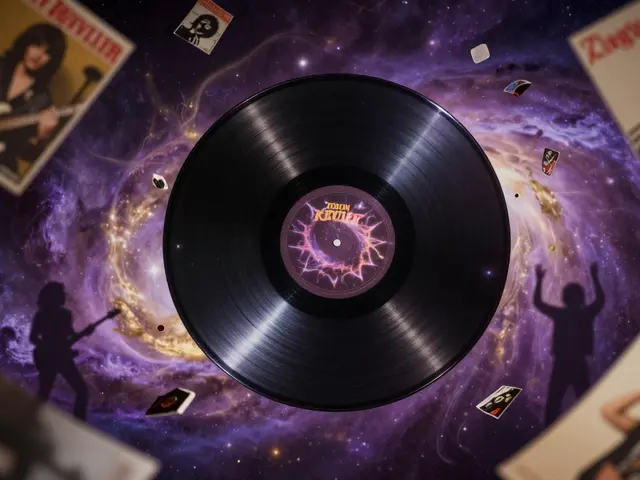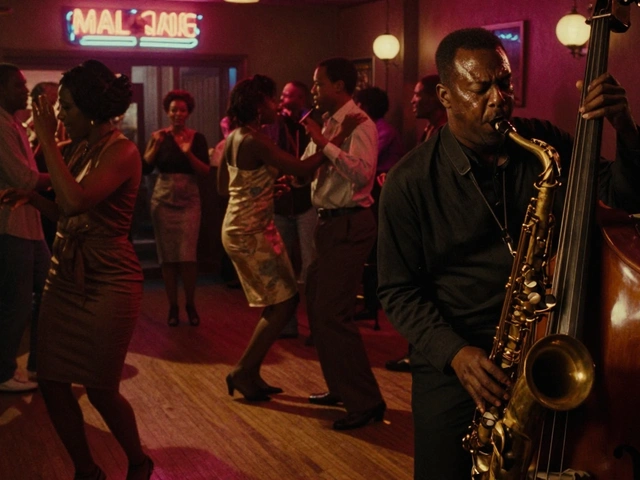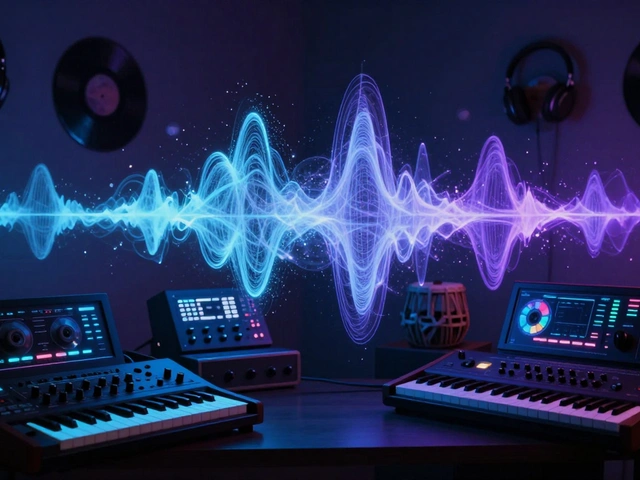The Spark of Creation: Songwriting for R&B
Songwriting is the backbone of any hit, and rhythm and blues is no exception. It all starts with an idea, a feeling, or a story that needs telling. For me, often, the best ideas come at unexpected times – say, during a quiet moment with Amelia or while watching a late-night cityscape from our Melbourne home. The process itself is both deeply personal and highly collaborative. It's not uncommon to spend days or weeks refining a hook or testing different lyrical approaches to find the one that truly captures the emotion we're aiming to convey.
Diving into the history books doesn't hurt either. R&B is rooted in the blues, gospel, and jazz, and borrowing from these rich traditions adds depth and authenticity to your work. Integrating time-tested chord progressions with contemporary beats can yield an irresistible sound. Understanding music theory and the elements that make up the distinct R&B sound is crucial, but so is trusting your intuition and knowing when to break the rules to create something truly original.
As songwriters, we must wear our hearts on our sleeves because authenticity is the currency of R&B. You have to dig deep into personal experiences, whether it's love, loss, joy, or pain. Yet, it's also about translating those feelings into a language that speaks to everyone—a universal story told through a personal lens. Balancing these two aspects is the art of R&B songwriting.
Laying down the melody often comes next. It must be catchy yet complex enough to convey sophisticated emotions. This is the part that people will hum in their quiet moments, the tune that will linger long after the song has ended. Each melody line, each pause has a purpose, and it's thrilling to tweak and adjust until every note feels like it has found its perfect place. Collaboration with other musicians during the songwriting phase can also provide new perspectives and push the boundaries of your own creativity.
Harmonies and Grooves: Arrangements that Speak
A great R&B song isn't just about the melody and lyrics; it's also about the arrangement. This is where you decide which instruments will tell which part of the story. The bass might carry the song's backbone, providing a groove that listeners can't help but sway to. The keys might add a layer of emotion, enhancing the track's mood. And let's not forget the role of the rhythm section in R&B. The right drum patterns can infuse the song with energy or give it a laid-back feel. The arrangement process is like painting with sound, each instrument bringing its own color and texture to the final picture.
For arrangements, technology has become our best ally. Ample access to virtual instruments and sample libraries can help sketch out the arrangement before bringing in live musicians. However, there's still nothing quite like the human touch—a guitarist who can bend a note just so, or a percussionist who can add nuances that no machine can replicate. Mixing traditional instrumentation with modern production techniques can lead to a sound that honors the genre's roots while pushing it into new territories.
Harmonies in R&B have the power to evoke strong emotional responses. They are more than just complementary vocals; they are the undercurrents of emotion in every track. Crafting these harmonies is akin to weaving a sonic tapestry, layer by layer, ensuring each voice complements the others while still standing out. When it clicks, it's magic—you know that you're not just hearing music, you're feeling it.
A crucial part of arranging is to leave breathing room for improvisation. Some of the most memorable moments in R&B recordings come from musicians playing off each other, capturing a vibe that you just can't write down. This is when allowing the talents of your collaborators to shine through is vital, trusting them to fill those spaces with something that's both unexpected and perfectly in place.
From Notebook to Mic: The Pre-Production Phase
Before recording, there's pre-production. This stage is all about preparation and planning. Having a clear vision for the song is crucial. It's like building a house—the foundation needs to be solid. Pre-production involves refining the structure of the song, deciding on tempo and key, and ironing out any potential issues that could disrupt the recording session. Such meticulous preparation enables us to make the most out of expensive studio time and talent.
Budget plays a big role in this phase. Not every project can afford full orchestration or a week in a top-tier studio, so making smart choices on where to allocate resources is a skill in itself. It's often in this phase where difficult decisions about what to keep and what to let go are made. But as I like to say, constraints breed creativity. You'd be surprised how often a limitation can turn into a defining feature of a track.
Rehearsing with the band or rhythm section is an integral part of pre-production. It's the time to make sure everyone is on the same page and understands the vibe of the track. Nothing can replace the chemistry of a band playing together, and these sessions can often lead to last-minute tweaks or adjustments in the arrangement that elevate the song to new heights.
Demos play a significant role too. They allow us to experiment with different ideas without the pressure of the final take. Listening back to a rough version of the song can be enlightening—it highlights what works and what doesn't, giving a chance to refine before committing to the final version. It is also a valuable tool for communicating with producers and engineers, helping to ensure that the vision for the track is shared and understood by all involved.
Capturing the Soul: Recording Sessions
When the day of the recording session arrives, it's a mix of excitement and focus. Finding the right studio is key—it needs to have not only the right equipment but also the right vibe. You want a place that feels comfortable, a space where creativity can flow freely. It's here that all the planning pays off; the players are ready, the arrangements are set, and it's time to capture the magic.
Sessions usually start with laying down the rhythm tracks. The drums and bass need to lock in to provide a solid foundation for the rest of the instruments. It's often said that if the groove isn't right, the song won't be either. So we take great care in getting that pocket just perfect. Once the rhythm section is down, we build upon it. Layering instruments, one by one, ensures that each part gets the attention it deserves.
For vocals, the right microphone and preamp can make all the difference, and capturing a powerful vocal take often requires creating an atmosphere in which the singer feels comfortable and inspired. Sometimes the lights are dimmed, sometimes it's about the right amount of reverb in the headphones—whatever it takes to draw out that soul-stirring performance.
As an R&B producer, knowing when to push for another take and when to recognize 'the one' is part expertise and part intuition. You're looking for technical precision, yes, but even more so for the emotion, the raw energy that will speak directly to the listener's soul. It's not uncommon for the best take to be the one where the artist stops thinking and just feels the music.
Shaping the Sound: The Art of Mixing
Once all the elements are recorded, the focus shifts to mixing. It's a highly technical and creative process, blending all the individual tracks into a cohesive whole. Each fader move, each EQ tweak has the ability to change the entire vibe of the song. The balance between instruments, the interplay of vocals and harmonies, the dynamics from verse to chorus—every decision in the mixing process is deliberate and impactful.
Mixing R&B requires a gentle touch. The goal is to enhance the song's emotional impact without overwhelming its subtleties. The mix engineer plays a pivotal role in this process, shaping the sound without altering the soul of the recorded performance. It's a delicate dance between preserving the rawness of the studio session and achieving a polished, radio-ready sound.
Communication between the mix engineer and the producer is key. Each has a vision for the track, and it's in their collaboration that the final sound is born. Achieving sonic clarity without losing the warmth inherent to R&B can be challenging, but when it's done right, the results are transcendent.
Dynamics play an even larger role in mixing R&B than in many other genres. The push and pull of volume, the depth created by effects, and the clarity of the vocals all come together to transport the listener into the heart of the song. A great mix can make the difference between a track that's merely good and one that's unforgettable.
Setting it Free: Mastering and Release
Finally, the track is ready for mastering. This stage is about polishing the music to its finest shine, making sure it stands up next to other commercial releases. It's also about consistency, ensuring that the song sounds great on any system, from high-end hi-fi to simple smartphone speakers.
Mastering engineers use an array of tools to achieve loudness, balance, and cohesion in the final product. They bring a fresh set of ears to the project, offering a new perspective that can often pick out subtle issues that may have been missed.
With mastering complete, we step into the release phase. In this digital age, distribution can be as simple as a few clicks, but it's not something to be taken lightly. The right release strategy can make a huge difference in how a song is received. Whether it's exclusive premieres, syncing opportunities, or just timing the release right, each decision plays a part in the song's journey into the world.
But the real joy isn't in the release; it's in the creation. It's in the late nights spent tweaking a mix or the look on the face of a musician when they nail a part. It's in watching a raw idea become a fully-formed piece of art that has the potential to move people—to make them feel something. And that's what R&B is all about: creating music that resonates, that echoes the complexities of the human experience, that, simply put, feels like home.






